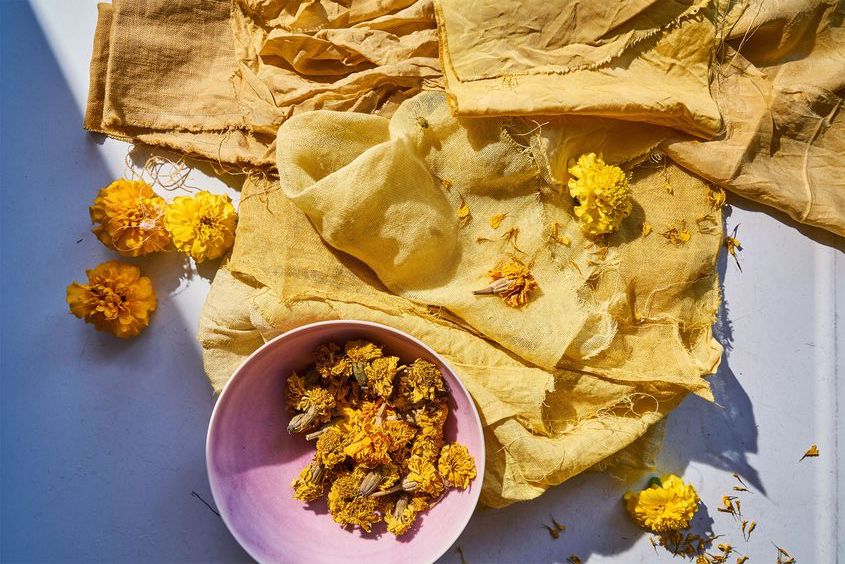
A SUSTAINABLE AND BEAUTIFUL WAY TO COLOUR YOUR CLOTHING
As conscious consumers, we are increasingly mindful of the ecological impact of the fashion industry. From the prevalence of fast fashion to the use of synthetic dyes and chemicals, we witness the detrimental effects on our planet.
This is why natural dyeing is gaining popularity as an alternative that is both sustainable and eco-friendly, providing a more responsible choice compared to synthetic dyes. Not only does natural dyeing promote sustainability, but it also produces unique shades that are exclusive to the natural world.
What is Natural Dyeing?
Natural dyeing involves using plant materials, such as leaves, roots, flowers, and bark, to create dyes for colouring fabrics. Unlike synthetic dyes, which are often made from toxic chemicals and require a lot of energy and resources to produce, natural dyes are non-toxic and biodegradable, making them a more environmentally friendly choice.

How to Natural Dye Your Clothing?
The process of natural dyeing is relatively simple, but it does require some preparation and patience. Here are the basic steps to follow:
- Choose your fabric: Natural fibers like cotton, linen, silk, and wool work best for natural dyeing.
- Choose your dye material: You can use a variety of plant materials to create different colours. Some popular options include avocado pits for pink, onion skins for yellow, and indigo leaves for blue.
- Prepare your dye bath: Boil your plant materials in water for a period of time to extract the colour. Strain the liquid and add it to a pot with enough water to cover your fabric.
- Pre-treat your fabric: To ensure that the colour sets properly, you'll need to pre-treat your fabric with a mordant, such as alum or iron.
- Dye your fabric: Add your pre-treated fabric to the dye bath and simmer it for about an hour or until you achieve the desired colour.
- Rinse and dry: Rinse your fabric thoroughly in cold water to remove any excess dye, then hang it up to dry.

The Benefits of Natural Plant Dyes
Beyond their sustainability and eco-friendliness, natural plant dyes offer numerous benefits. They create exceptional and captivating pigments that cannot be replicated by synthetic dyes. Additionally, natural dyes often provide a softer and more organic feel, making them ideal for clothing and textiles in contact with our skin. Unlike synthetic dyes, which frequently contain harmful substances, natural dyes derived from plant materials and organic sources are biodegradable and non-toxic. Consequently, waste water from natural dyeing processes poses minimal threat to rivers and the delicate balance of aquatic ecosystems.
Furthermore, natural dyeing also promotes better health. Synthetic dyes often contain toxic chemicals that can be detrimental to both humans and the environment. By opting for natural dyes, we can avoid exposure to these toxins and support a healthier and more sustainable lifestyle.

If you're interested in trying out natural dyeing as a hobby, there are many resources available to help you get started. Books like "Botanical Inks" by Babs Behan or "The Modern Natural Dyer" by Kristine Vejar and Instagram accounts like @botanicalcolors and @sashaduerr are great places to find inspiration and learn more about the process.
By choosing natural clothing, we can not only look good and feel comfortable, but also support a more sustainable and mindful way of life. Natural dyeing is just one way to incorporate more natural and sustainable practices into our daily lives, and it's a beautiful and rewarding way to do so.


